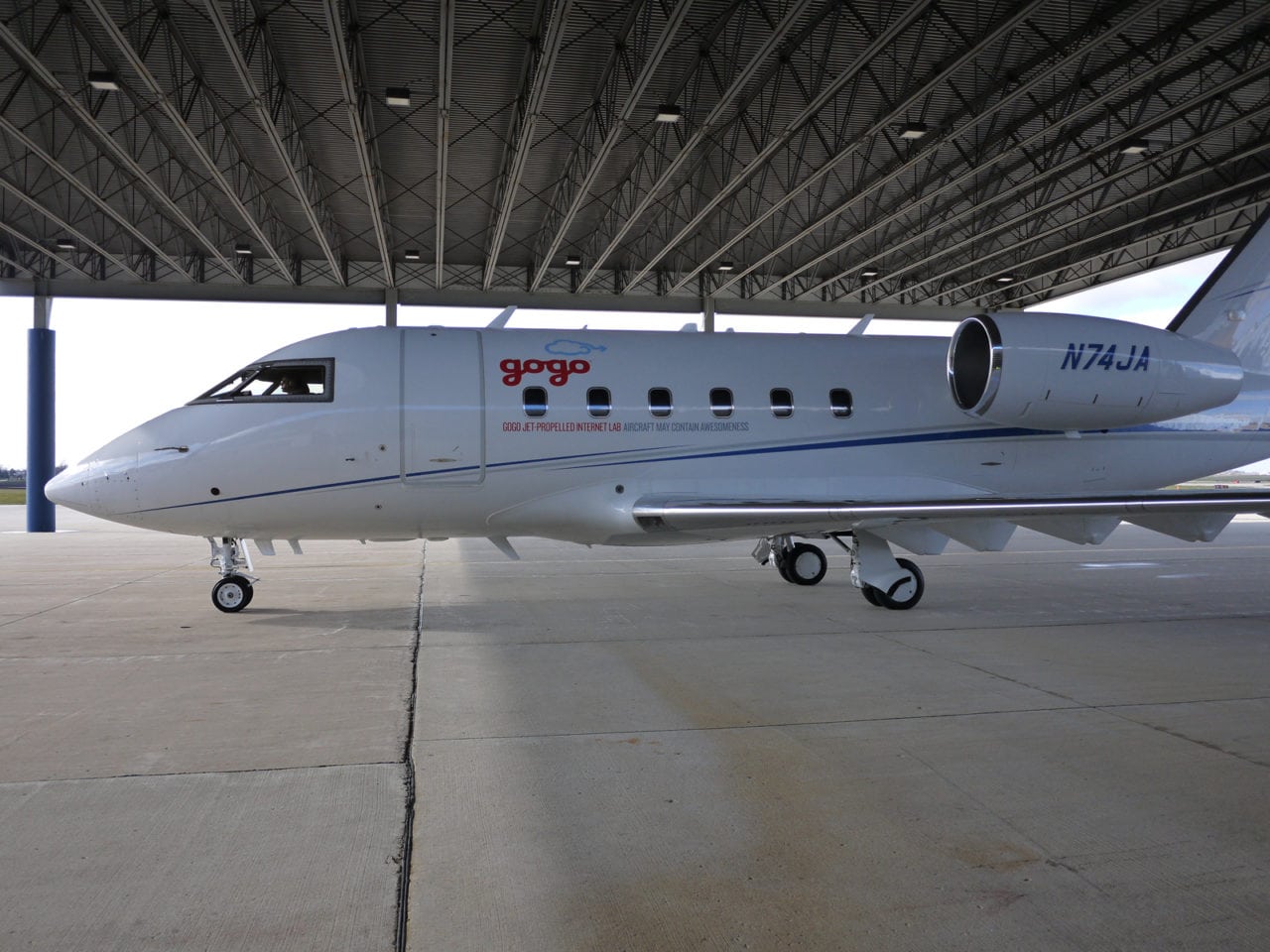[Avionics Today 05-20-2015] Gogo is looking to 2Ku deployment and additional Air-to-Ground (ATG) capacity to enable the connected aircraft and expand revenue capabilities. Speaking at the J.P. Morgan Global Technology, Media and Telecom Conference yesterday, Gogo Executive Vice President and Chief Financial Officer Norman Smagley laid out the In-Flight Connectivity (IFC) provider’s plans to drive revenue through their expanding capacity.
 |
| Gogo test plane. Photo: Gogo |
“The connected aircraft really is the service, the crew, the cockpit and the aircraft itself and that is a tremendous opportunity because it gives airlines the opportunity to reduce maintenance costs and improve their safety record in a number of ways,” said Smagley. “The savings opportunity and the safety improvement opportunity is astronomical.”
The connected aircraft, or an aircraft in which all systems and components can be monitored and that communicates at all times through on-board connectivity, has tremendous application both with airline communications and with maintenance applications, according to Smagley. One of these moving pieces is the crew, for which Gogo launched its Crew Connect service at the Aircraft Interiors Expo in Hamburg, Germany last month. This service will enable the crew to keep in touch with the airline and more effectively handle passenger operations. But there are still plenty of places in the aircraft that connectivity hasn’t touched.
“What we really want to be is the trusted communications platform to provide all the systems on the aircraft with a way to get the data to not only GE, who made the engine, but the airlines operations groups who’s monitoring and doing health checks on the aircraft on an ongoing basis to make sure everything is okay,” said Smagley. “So that will take some time.”
SITA and ARINC’s duopoly over the bandwidth and systems capable of providing aircraft health monitoring could throw up a barrier to airlines who wish to equip for enhanced health monitoring and in-flight maintenance tracking, according to the Gogo executive. But Smagley stated firmly that the company will look to break up the duo’s hold over the spectrum and provide in-flight health monitoring through Gogo’s own system.
As trials are launched for its satellite-based 2Ku system this summer, Gogo believes the enhanced connectivity alongside the spectrum they hope to win from the 14 Ghz auction will improve reliability and profitability amongst their offerings, thus enabling the connected aircraft of the future.
“Once we get 2Ku deployed in a significant way, we now have capacity to really drive revenue growth so we won’t be forced to manage the capacity through price, we can open up the service and price it to drive revenue instead of the opposite,” said Smagley. This means the company could see price come down and take rates go up as a result instead of using price to regulate capacity.
Through enhanced connectivity applications, the airline could also help its customers, said Smagley. This means that, in the future, a passenger will be able to redirect lost baggage or rebook a connecting flight all while onboard the aircraft.
“Think about it in terms of airline-passenger interface. Before you actually get on the plane you have multiple interactions with the airline, you get on the plane you check the schedule you check the fares, you come back, you book the ticket, you come back, you get your boarding pass, and then you go on the airplane at the airport. So, you’re sitting in their lap and there’s radio silence now, the airline cannot interact with you,” Smagley explained.
The IFC provider seems to be undaunted by the Proton launch failure earlier in the week, which has postponed the launch of further satellites for Inmarsat’s Global Xpress network. Smagley noted that in using a system based on Ku band instead of Ka, the robustness of choices in Ku satellites enables another satellite to easily take its place should one fail, or fail to reach orbit.
“As we offload the existing fleets to 2Ku and then upgrade to next gen ATG we’ll be able to truly drive revenue because we’ll have capacity across all fleets to do that at a fraction of the cost, so it will be a tremendous win for us, both top line and bottom line,” said Smagley.
Also, as Gogo waits with baited breath for the Federal Communications Commission (FCC) to issue a report and order for the upcoming 14 GHz auction — originally set to be issued in December and now expected for the end of June — the additional ATG capacity will drive revenue and reliability in the ground side of the business.
“In the Ka network that’s not the case, they’re generally regional players and as Inmarsat tries to launch their global network they are susceptible to this risk, which for them certainly in the short term is a problem,” said Smagley.